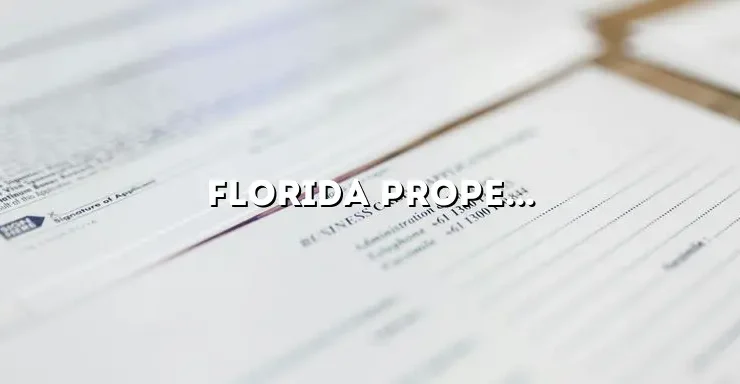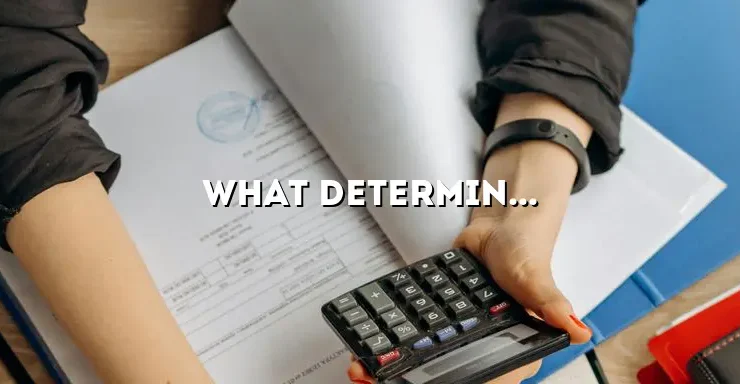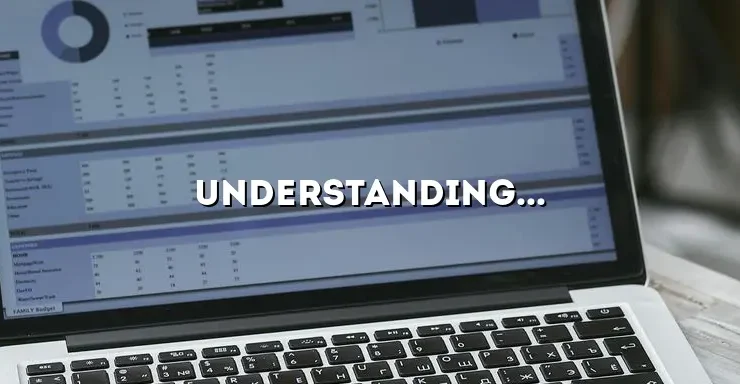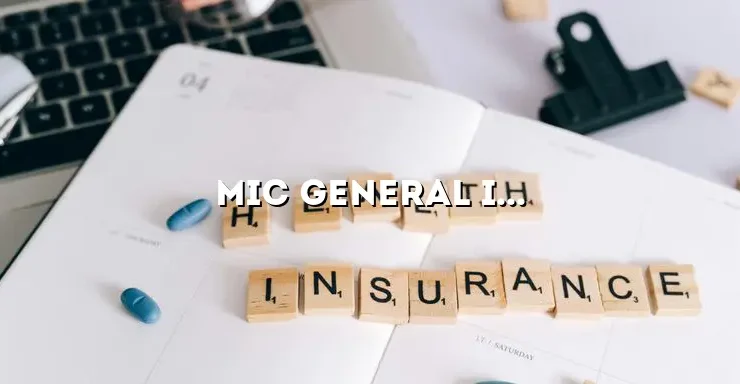
Florida, the sunshine state, renowned for its beautiful beaches and vibrant cities, is currently facing a major crisis in the property insurance industry. Homeowners across the state are grappling with skyrocketing insurance rates, limited coverage options, and an increasing number of insurance companies withdrawing from the market. This article delves into the complexities of the Florida property insurance crisis, shedding light on the underlying factors and exploring potential solutions to this pressing issue.
As the frequency and severity of natural disasters, such as hurricanes and floods, continue to rise, insurance companies are feeling the financial strain. Florida, being one of the most hurricane-prone states in the US, experiences a high number of insurance claims each year. This has resulted in insurance companies being forced to hike premiums to cover their expenses, leaving homeowners burdened with exorbitant insurance costs.
The Root Causes of the Crisis
The Florida property insurance crisis is not a result of a single factor but rather a combination of several interconnected issues. Understanding the root causes of this crisis is essential in finding effective solutions.
Climate Change and Increasing Natural Disasters
One of the primary factors contributing to the property insurance crisis in Florida is climate change. Rising global temperatures have led to more frequent and severe weather events, including hurricanes, floods, and storms. The state’s unique geographic location makes it particularly vulnerable to these natural disasters. As a result, insurance companies face higher claims and payouts, leading to increased premiums for homeowners.
Inadequate Risk Assessment and Pricing
The insurance industry’s ability to accurately assess and price risks is crucial in maintaining a stable market. However, in the case of Florida’s property insurance crisis, inadequate risk assessment and pricing have played a significant role. Insurance companies have struggled to accurately predict the potential damages and losses associated with natural disasters, leading to higher premiums and reduced coverage options for homeowners.
Insurance Fraud and Abuse
Insurance fraud and abuse have also contributed to the property insurance crisis in Florida. Unscrupulous individuals take advantage of the system by submitting false or exaggerated claims, leading to inflated costs for insurance companies. This, in turn, forces insurers to increase premiums to offset the losses caused by fraudulent activities.
The Ripple Effects on Homeowners
The Florida property insurance crisis has had far-reaching consequences for homeowners across the state. From diminished coverage options to unaffordable premiums, the impacts of this crisis are deeply felt.
Limited Coverage Options
As insurance companies face mounting financial pressures, they have begun to limit coverage options for homeowners in Florida. This means that homeowners may not be able to find policies that adequately protect their properties against various risks, leaving them vulnerable in the face of potential damages.
Skyrocketing Insurance Premiums
Perhaps the most pressing issue for homeowners in Florida is the skyrocketing insurance premiums. Many homeowners have seen their premiums increase by significant percentages, making it increasingly challenging to afford the necessary coverage. This financial burden can have severe implications for homeowners, especially those on fixed incomes or with limited resources.
Difficulty in Obtaining Coverage
With insurance companies withdrawing from the market, homeowners in Florida are finding it increasingly challenging to obtain coverage for their properties. This lack of competition in the insurance market further exacerbates the crisis, as homeowners have limited options and may be forced to settle for inadequate coverage or go without insurance altogether.
The Role of Legislation and Regulation
The Florida property insurance crisis requires a comprehensive approach that involves legislation and regulation. Understanding the impact of existing laws and regulations is crucial in identifying areas for improvement and implementing effective solutions.
Impact of Recent Regulatory Changes
In recent years, Florida has implemented various regulatory changes aimed at addressing the property insurance crisis. These changes include reforms to the state’s assignment of benefits (AOB) system and efforts to combat insurance fraud. Evaluating the impact of these changes is essential in determining their effectiveness and identifying any unintended consequences.
Potential Reforms to Stabilize the Market
Stabilizing the property insurance market in Florida requires a proactive approach to regulation. This may involve implementing reforms such as stricter oversight of insurance rates, promoting competition among insurance companies, and incentivizing companies to provide coverage in high-risk areas. Exploring these potential reforms can help create a more stable and affordable insurance market for homeowners.
Exploring Alternative Coverage Options
As traditional insurance becomes increasingly unaffordable or limited in its offerings, homeowners in Florida are seeking alternative coverage options to protect their properties against potential damages.
Parametric Insurance
Parametric insurance is an innovative solution gaining traction in the insurance industry. Unlike traditional insurance, which compensates for actual damages, parametric insurance pays out a predetermined amount based on predefined parameters. This type of coverage can provide homeowners in Florida with financial protection in the event of a covered natural disaster.
Catastrophe Bonds
Catastrophe bonds, also known as cat bonds, are another alternative coverage option that can mitigate the risks associated with natural disasters. These bonds transfer the financial risk of a catastrophic event from insurance companies to investors. Homeowners in Florida can benefit from the availability of cat bonds, as they provide insurers with additional funds to cover potential claims.
The Role of Public-Private Partnerships
Addressing the property insurance crisis in Florida requires collaboration between government entities and insurance companies. Public-private partnerships can play a significant role in finding sustainable solutions.
Increased Government Involvement
Government entities can play a proactive role in stabilizing the property insurance market by providing incentives for insurers to offer coverage in high-risk areas, implementing stricter regulations on pricing, and establishing a fund to support homeowners who struggle to obtain coverage. Increased government involvement can help ensure that homeowners in Florida have access to affordable and comprehensive insurance options.
Collaboration with Insurance Companies
Insurance companies also have a vested interest in finding solutions to the property insurance crisis. Collaborating with government entities can help insurers navigate the challenges they face while ensuring that homeowners are adequately protected. By working together, public and private entities can develop innovative strategies and initiatives to address the crisis.
Protecting Homeowners: Steps for Mitigation and Preparedness
While addressing the property insurance crisis is crucial, homeowners in Florida can take proactive steps to mitigate risks and ensure their properties are adequately protected.
Investing in Resilient Infrastructure
One way homeowners can protect their properties is by investing in resilient infrastructure. This may include retrofitting homes to withstand hurricanes, reinforcing roofs, and installing impact-resistant windows. By making these upgrades, homeowners can minimize potential damages and potentially reduce insurance premiums.
Insurance Risk Assessment and Mitigation
Homeowners should also conduct a thorough risk assessment of their properties and take steps to mitigate potential risks. This may involve maintaining a well-maintained and documented inventory of personal belongings, securing the property against theft and vandalism, and implementing fire safety measures. By demonstrating proactive risk management practices, homeowners may be able to negotiate better insurance rates.
The Road Ahead: Seeking Long-Term Solutions
Addressing the Florida property insurance crisis requires long-term solutions that prioritize the interests of homeowners and promote a stable insurance market.
Encouraging Competition in the Market
One potential strategy is to encourage competition among insurance companies operating in Florida. This may involve reducing barriers to entry for new insurers, promoting innovation in coverage options, and fostering an environment that encourages fair and transparent pricing.
Investing in Resilience and Disaster Preparedness
Another long-term solution is to invest in resilience and disaster preparedness measures. This can include improving building codes, enhancing infrastructure to withstand natural disasters, and providing financial incentives for homeowners to make their properties more resilient. By investing in these measures, Florida can reduce the frequency and severity of insurance claims, ultimately leading to more stable insurance rates.
In conclusion, the Florida property insurance crisis poses significant challenges to homeowners and insurance companies alike. By understanding the root causes, exploring alternative coverage options, and fostering collaboration between public and private entities, we can work towards finding sustainable solutions. It is imperative that policymakers, insurance companies, and homeowners come together to address this crisis and ensure the protection and well-being of Florida residents and their properties.






